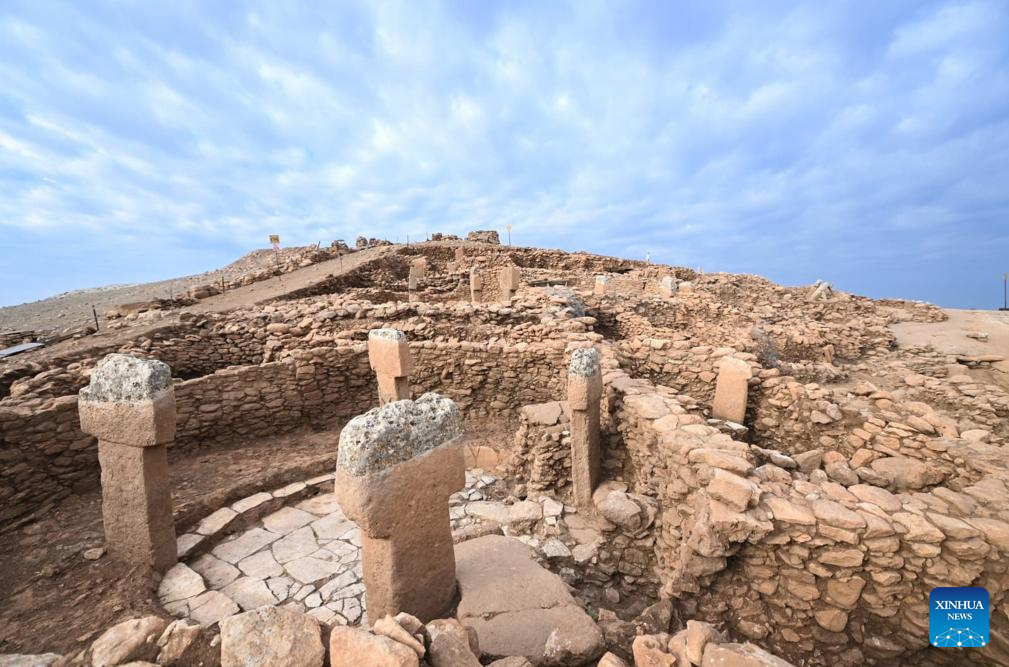|
|
TODAY.AZ / World news
Türkiye announces Neolithic-era findings
28 November 2025 [09:00] - TODAY.AZ

By Alimat Aliyeva
Türkiye has revealed new archaeological discoveries at Tas Tepeler, one of the country’s largest Neolithic excavation projects, shedding fresh light on life more than 12,000 years ago, Culture and Tourism Minister Mehmet Nuri Ersoy announced on Wednesday, Azernews reports, citing foreign media.
During a briefing at the Karahantepe Visitor Center in southern Sanliurfa province, Ersoy presented a human sculpture believed to have been placed as a votive offering at the Göbeklitepe site, describing it as a highly aesthetic and striking example of Neolithic sculptural artistry.
Ersoy also showcased two human-face reliefs unearthed during the 2025 excavation season at the Sefertepe archaeological site, noting that these artworks display a unique aesthetic distinct from styles previously observed at Göbeklitepe, Karahantepe, and Sayburc.
One particularly intriguing find is a double-faced human motif carved into a black serpentine bead from Sefertepe, which Ersoy said provides valuable insights into the symbolic and spiritual world of Neolithic communities in the region.
The minister emphasized that these findings suggest densely populated settlements of varying scales existed in southeastern Türkiye during the Neolithic era, highlighting the area’s importance as a cradle of early human civilization.
The Tas Tepeler project encompasses a group of Neolithic sites near Sanliurfa, collectively revealing the sophistication, artistry, and spiritual life of communities that thrived over 12 millennia ago. Archaeologists hope that continued excavations will uncover even more unique artifacts that could reshape our understanding of early human culture in the region.
Some of the newly discovered sculptures and reliefs have already sparked comparisons with modern art, with visitors and researchers marveling at the timeless elegance and expressiveness of Neolithic craftsmanship.
URL: http://www.today.az/news/regions/263770.html
 Print version
Print version
Connect with us. Get latest news and updates.
See Also
- 28 November 2025 [09:00]
Türkiye announces Neolithic-era findings - 27 November 2025 [23:55]
Significant rare earth deposits found in Malatya - 27 November 2025 [22:47]
Ankara highlights strong diplomatic performance at G20 summit in Johannesburg - 27 November 2025 [21:48]
Istanbul Expo Centre hosts 11th World Halal Summit and Halal Expo International Trade Fair - 27 November 2025 [20:55]
Pope Leo XIV visits Türkiye marking 1700th anniversary of First Council of Nicaea - 27 November 2025 [20:21]
South Korea launches research satellite - 27 November 2025 [19:50]
Erdo?an calls for fair access to healthcare at Ankara forum - 27 November 2025 [19:20]
AI heads futuristic Dubai restaurant - 27 November 2025 [09:00]
Russian company unveils first bio-drones - 26 November 2025 [23:23]
Lotte and HD Hyundai complete NCC overhaul
Most Popular
 Azerbaijan’s Deputy PM meets Russian counterpart to discuss bilateral cooperation
Azerbaijan’s Deputy PM meets Russian counterpart to discuss bilateral cooperation
 SOCAR to implement fully digital waste monitoring system across all operations
SOCAR to implement fully digital waste monitoring system across all operations
 Azerbaijan, Russia sign digital freight data exchange agreement
Azerbaijan, Russia sign digital freight data exchange agreement
 Pashinyan left Modi in broken trough
Pashinyan left Modi in broken trough
 Azerbaijani, Turkish Opera Theaters to undertake joint projects
Azerbaijani, Turkish Opera Theaters to undertake joint projects
 OIC Cultural Festival: Baku Creative Week 25 to feature MyForum panel sessions
OIC Cultural Festival: Baku Creative Week 25 to feature MyForum panel sessions
 Pashinyan vs Etchmiadzin: Armenian PM wins the next round
Pashinyan vs Etchmiadzin: Armenian PM wins the next round
